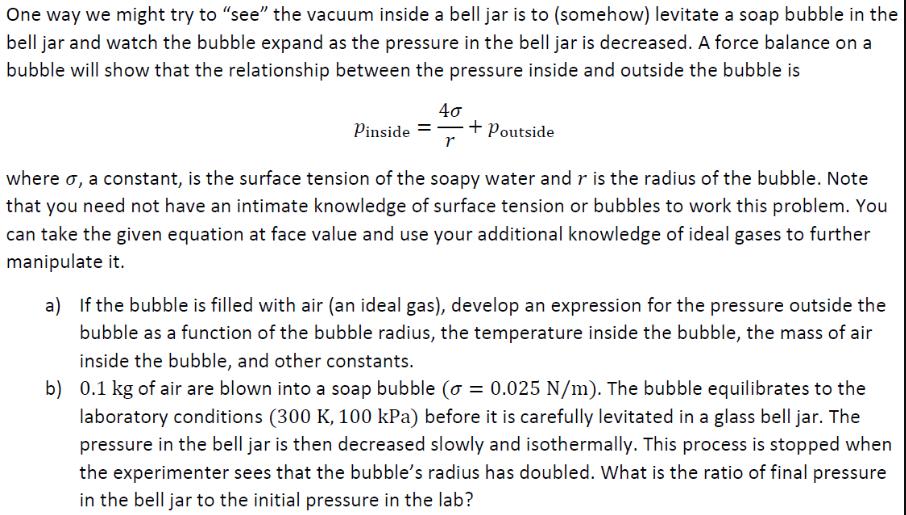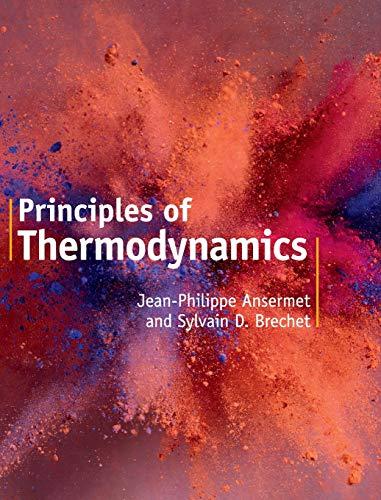Answered step by step
Verified Expert Solution
Question
1 Approved Answer
One way we might try to see the vacuum inside a bell jar is to (somehow) levitate a soap bubble in the bell jar

One way we might try to "see" the vacuum inside a bell jar is to (somehow) levitate a soap bubble in the bell jar and watch the bubble expand as the pressure in the bell jar is decreased. A force balance on a bubble will show that the relationship between the pressure inside and outside the bubble is Pinside 40 r +Poutside where , a constant, is the surface tension of the soapy water and r is the radius of the bubble. Note that you need not have an intimate knowledge of surface tension or bubbles to work this problem. You can take the given equation at face value and use your additional knowledge of ideal gases to further manipulate it. a) If the bubble is filled with air (an ideal gas), develop an expression for the pressure outside the bubble as a function of the bubble radius, the temperature inside the bubble, the mass of air inside the bubble, and other constants. b) 0.1 kg of air are blown into a soap bubble (o = 0.025 N/m). The bubble equilibrates to the laboratory conditions (300 K, 100 kPa) before it is carefully levitated in a glass bell jar. The pressure in the bell jar is then decreased slowly and isothermally. This process is stopped when the experimenter sees that the bubble's radius has doubled. What is the ratio of final pressure in the bell jar to the initial pressure in the lab?
Step by Step Solution
★★★★★
3.55 Rating (148 Votes )
There are 3 Steps involved in it
Step: 1

Get Instant Access to Expert-Tailored Solutions
See step-by-step solutions with expert insights and AI powered tools for academic success
Step: 2

Step: 3

Ace Your Homework with AI
Get the answers you need in no time with our AI-driven, step-by-step assistance
Get Started


